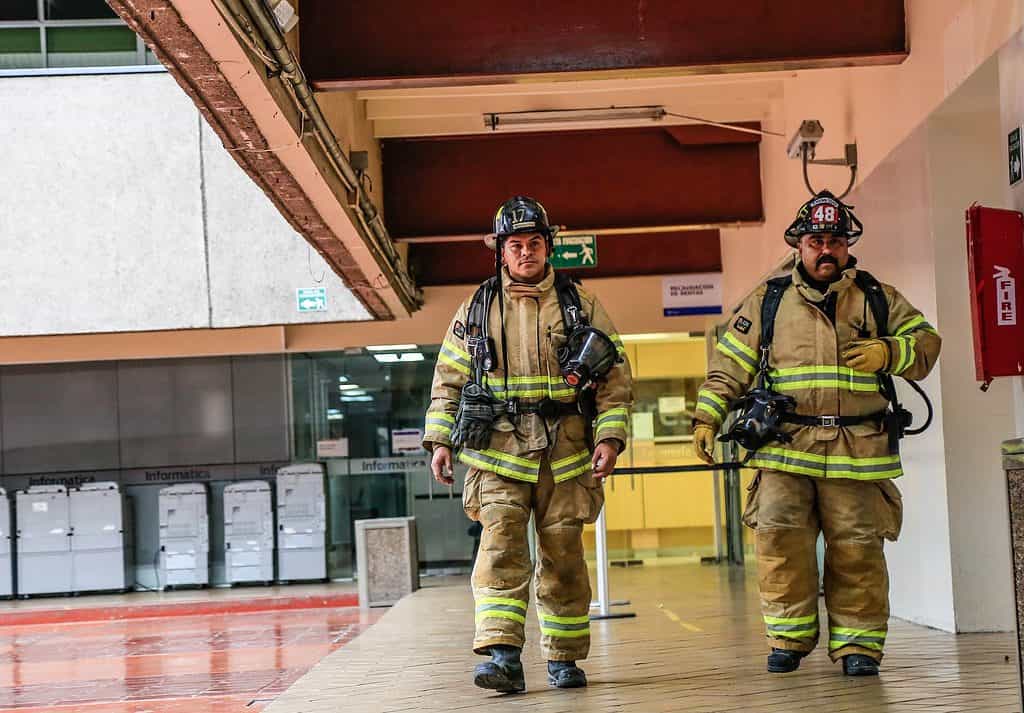Firefighting is a dangerous and demanding job that requires bravery, strength, and quick thinking. It’s not news to anyone that firefighters have one of the riskiest jobs out there, facing numerous threats every single day on the job. However, most firefighters aren’t actually killed by fires and other emergency-related accidents, but rather by an unseen product of their jobs: cancer.

Firefighting involves working in environments where there may be high levels of smoke, chemicals, and other harmful substances, all of which can increase the risk of cancer. Research has shown that firefighters have an increased risk of developing certain types of cancer, such as lung cancer and mesothelioma.
But firefighters aren’t exposed to carcinogens only during emergency situations. In a new study, researchers at Duke University strapped silicone wristbands to 20 firefighters from the Durham Fire Department while they went about their usual six-day shift. These ordinary wristbands can absorb more than 134 different chemicals, including known carcinogens like phthalates, brominated flame retardants, organophosphate esters, polycyclic aromatic hydrocarbons (PAH), and per- and polyfluoroalkyl substances (PFAS). That’s some pretty impressive chemical surveillance for a device that only costs $1 a pop.
When the researchers compared the chemical exposure recorded on duty versus off duty, they found a striking pattern. Levels of PAH, brominated flame retardants, and organophosphate esters were 0.5 to 8.5 times higher in the wristbands worn while on duty than in those worn while off duty.
“Seventy-one of these chemicals — including seven PFAS, which to our knowledge have never previously been detected using wristbands — were found in at least half of the bands,” said Jessica Levasseur, a Ph.D. student at Duke’s Nicholas School of the Environment, who led the study.
Untangling the many risks that come with being a firefighter
On days the firefighters were actually called to put out a fire, their wristbands contained elevated levels of PFOS (a type of PFAS), up 2.5 times the amount seen in bands worn by firefighters who stayed at their base. In contrast, during off-duty days, the bands contained high levels of phthalates and pesticides, highlighting the fact that even in civilian life we are regularly exposed to potentially cancer-causing environmental chemicals.
But the big takeaway here is that firefighters are regularly exposed to cancerogenic while on duty even when they’re not putting out fires. In other words, just being a firefighter means you’re at a much higher of developing cancer than in other professions, regardless of whether you actually respond to a fire. Knowing this could direct regular monitoring and pave the way for early interventions that could save a lot of lives.
These findings may explain why nationwide fire watch guards have a 9% higher risk of being diagnosed with cancer than the national average and a 14% higher risk of dying from the disease, according to studies by the National Institute of Occupational Safety and Health.
“Firefighters have high cancer rates compared to the general population, but we don’t know why,” Levasseur said.”Is it caused by exposure to one chemical or a mix of them? Is it something they breathe in while working in fires or being near them? Or something else? There are lots of risk factors and potential routes of exposure, and we wanted to see if silicone wristbands could be a practical tool for disentangling them.”
Next, the researchers plan on conducting follow-up studies to pinpoint which chemical sources are responsible for the cancerogenic exposure that contributes to firefighters’ risk of cancer when they’re not at fire scenes.
Despite the risks they face on the job, firefighters continue to bravely serve their communities and protect lives and property. The least we can do is to make sure these risks are minimized as much as possible.
The findings appeared in the journal Science of The Total Environment.






